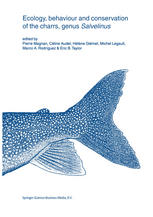

Most ebook files are in PDF format, so you can easily read them using various software such as Foxit Reader or directly on the Google Chrome browser.
Some ebook files are released by publishers in other formats such as .awz, .mobi, .epub, .fb2, etc. You may need to install specific software to read these formats on mobile/PC, such as Calibre.
Please read the tutorial at this link: https://ebookbell.com/faq
We offer FREE conversion to the popular formats you request; however, this may take some time. Therefore, right after payment, please email us, and we will try to provide the service as quickly as possible.
For some exceptional file formats or broken links (if any), please refrain from opening any disputes. Instead, email us first, and we will try to assist within a maximum of 6 hours.
EbookBell Team

4.0
36 reviewsSalvelinus species are one of the most thoroughly studied groups of fishes. Many reasons explain this intense interest in charr biology. Charrs have a Holarctic distribution encompassing many Asian, North American, and European countries and occupy diverse marine and freshwater environments. Furthermore, the current distribution of charr includes areas that were directly influenced by climate and topographic change associated with the many Pleistocene glaciations. Undoubtedly, these conditions have promoted much of the tremendous morphological, ecological, and genetic variability and plasticity within Salvelinus species and they make charr very good models to study evolutionary processes 'in action'. Many charr species also exhibit demographic characteristics such as slow growth, late maturity, and life in extreme environments, that may increase their susceptibility to extinction from habitat changes and overexploitation, especially in depauperate aquatic habitats. This vulnerability makes understanding their biology of great relevance to biodiversity and conservation. Finally, charr are of great cultural, commercial, and recreational significance to many communities, and their intimate linkage with human societies has stimulated much interest in this enigmatic genus. This volume comprises a selection of papers presented at the fourth International Charr Symposium held in Trois-Rivières (Québec, Canada), from 26 June to 1 July 2000. It includes 31 papers on ecological interactions and behaviour, trophic polymorphism, movement and migration, ecophysiology and evolutionary genetics, ecological parasitology, environmental stress and conservation. These studies cannot cover all recent developments in the ecology, behaviour and conservation of Salvelinus species, but collecting them into a special volume should bring attention to current research on this important genus and stimulate further work on Salvelinus species.